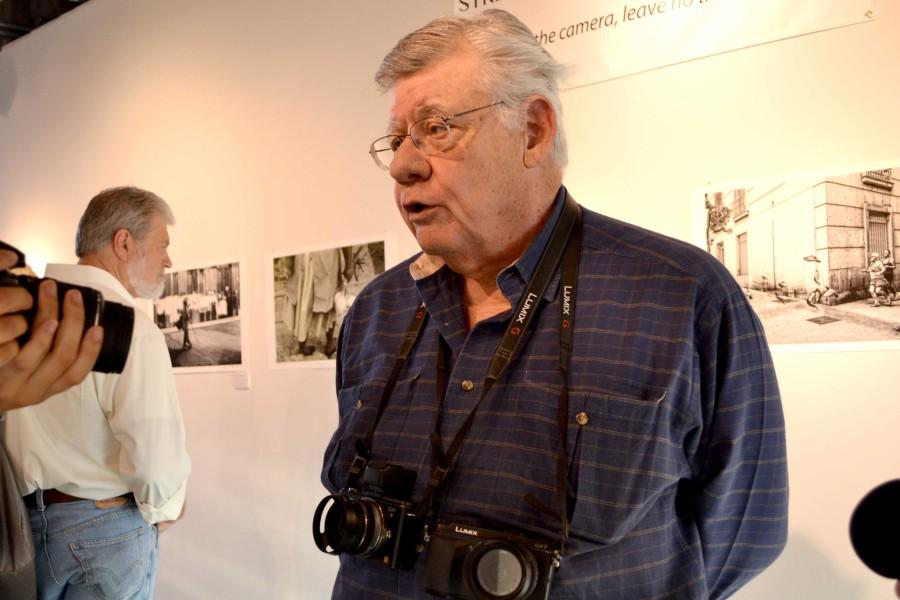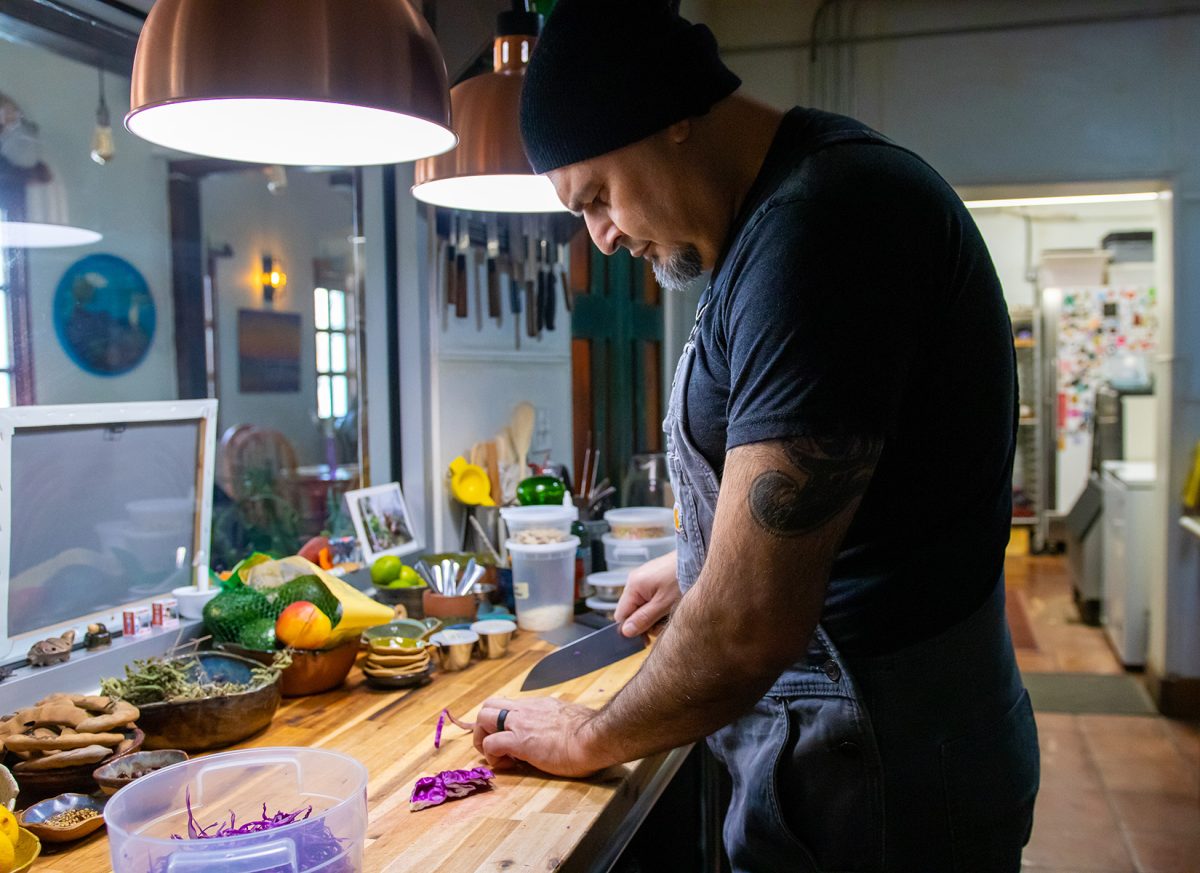UTEP Journalism professor David Smith-Soto will have his photographic work displayed until Oct. 31at the Glass Gallery located in the third floor of the Fox Fine Arts Center.
“I was an urban kid growing up in San Jose so I photographed life in the streets,” Smith-Soto said in an article for Borderzine, a UTEP digital publications website. “I was also extremely nearsighted and I quickly noticed that I could see details in the photos that I never saw when I was taking the picture. That got me into a lifelong habit of seeing with the camera.”
Smith-Soto was born in Costa Rica in 1945 and came to North America in 1958. Over the course of 60 years, he visited Europe, Asia, the Middle East, and the Americas where he would photograph “the decisive moment in city streets in many different countries.” Smith-Soto explains that the ‘decisive moment’ was something “Father of Photojournalism” Henri Cartier-Bresson would often speak of, which many other photographers would try to capture in street photography. Smith-Soto says that he has been interested in photography since his father first put a camera in his hands when he was nine years old.
“My dad was a lawyer, but he was an amateur photographer as well. I grew up walking around with him in Costa Rica. I used to walk around the city taking pictures and I’ve never stopped,” Smith-Soto said in an interview with UTEP non-commercial radio station, KTEP.
Smith-Soto began working as a UTEP Journalism professor in 2004. He has worked as managing editor of The Winchester Evening Star, editor of EL Nuevo Dia of San Juan, Puerto Rico, staff writer at The Miami Herald and managing editor of
El Miami Herald.
He says that, while he has made a living off of journalism, his passion has always been for photography, referring to it as “a tremendous tool for freedom of expression throughout the world.” Through his portfolio titled “Street Photography 1954-2014,” Smith-Soto wishes to raise money for Borderzine students to be able to participate in internships by selling the photos he has taken throughout
his lifetime.
“There are a bunch of anniversaries going on for UTEP. Obviously UTEP’s centennial, as well as this being my tenth year as a professor, and it’s Borderzine’s sixth year anniversary. One of the things we’ve been doing is making sure that Borderzine students get to go to internships which cost $3,000 each and we need to raise money, so I gave my prints to Borderzine and if anyone wishes to donate, they can do so on the Borderzine website and receive one of my prints,”
Smith-Soto said.
Borderzine is an online newspaper that seeks to spread diversity in news media, particularly through Latino students. As stated on the Borderzine website, “it creates an unprecedented national dialogue around issues of newsroom diversity and shifts the new voices, perspectives and experiences.” Borderzine celebrates its sixth year anniversary this October and plans to redesign their website to be more enhanced and user-friendly, in the near future.
“We’ve wanted for David’s photography to be shown in an exhibit for a long time. We’re also only able to pay for three student internships each year, and we clearly have more students than we have internships to be able to pay for,” Borderzine project director Zita Arocha said. “We might not be able to raise enough money for another internship from David’s pictures, but every bit helps. I hope that, someday, we’ll be able to pay for a dozen internships each year.”
Smith-Soto’s portfolio will be visible in room 373 of the Fox Fine Arts center from 8 a.m. to 5 p.m. for the remainder of October. The portfolio is free to attend and features 26 of Smith-Soto’s photos, both in color and black-and-white.
Joseph Esposito may be reached at [email protected].






